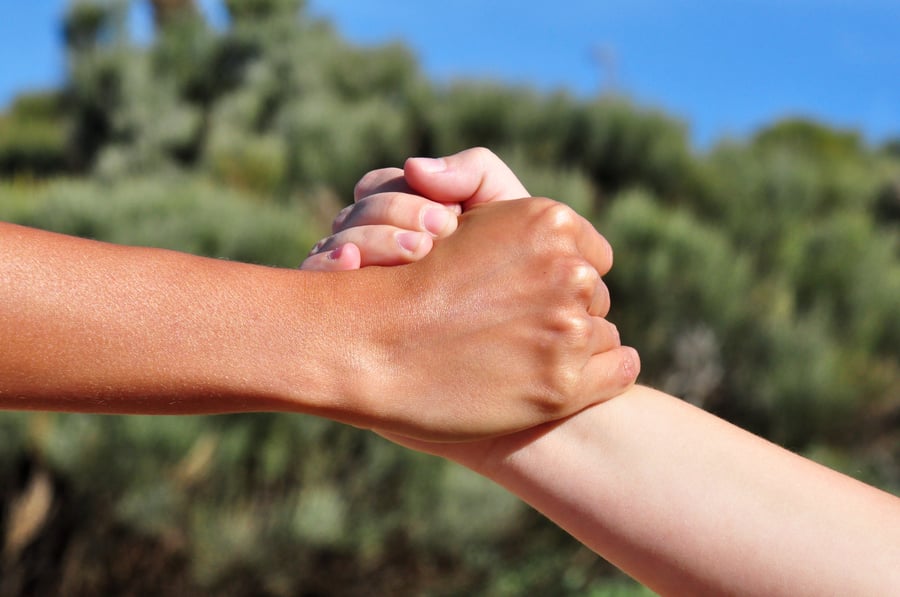
Have you ever wondered how having senior citizens working alongside high school students might affect your organization? Encouraging the mixing of diverse age groups and experience levels as you build your volunteer base can be highly beneficial according to a report by the Minnesota Literacy Council. The benefits can include:
- Cross-generational education and learning as different generations share their knowledge and experience
- A more inclusive atmosphere, regardless of age, gender, education level, etc., causing supporters to feel welcome and supportive
- A higher level of success for your organization due to everyone involved and able to work happily and cohesively together
With all these great benefits, the question is not when to diversify your volunteer base, but how. The first steps is understanding the different types of volunteer groups. There are four current volunteering groups:
Traditionalists (born around 1925-1944) are committed, competent and loyal volunteers who volunteer because they feel it’s their civic duty. They tend to pick an organization or job to commit to and stay with it for many years. They prefer to communicate by phone, in written letters or in person.
Baby Boomers (1945-1964) are ambitious, competent and competitive workers. They want to know how they’re part of the bigger picture, and if they’re making an impact with their work. Boomers prefer short term, specific assignments and opportunities to use their special skills, and they prefer to communicate through email, on the phone, or in person.
Generation X-ers (1965-1984) are adaptable, confident, self-starters and determined. X-ers volunteer when they see a cause that impacts them directly. They’re technologically savvy and highly educated, and prefer to communicate through email, text, and Facebook.
Millennials (1985-2004) are also highly educated and extremely technologically savvy, as well as enthusiastic, fun and eager. Millennials crave personal attention and lots of praise. Like Traditionalists, they volunteer because they believe it’s their civic duty and they want to make a difference. Millennial students often volunteer to gain professional experience. They came of age through social media and prefer to communicate through Facebook, Twitter or text.
Of course, it’s impossible to simply place someone into one category based on their birth year, but the descriptions can give us a little insight into how volunteers of different ages might think, feel, and interact with each other. Both the Baby Boomers and the Millennials seem to volunteer because they feel it is their civic duty. One group might be participating in order to fill free time once retired, while the other is looking to gain experience and have an impact in the world. These reasons are different, but the main goal of all volunteers tends to be similar in the end - they want to contribute to society and know that they’re making a difference.
Become Good Friends
One of the best ways to help bridge possible age gaps is to put a great deal of emphasis on becoming good friends. Just like it’s important to invest in training and educating volunteers, helping to develop relationships between varying age groups is just as important. Take time to plan events where your volunteers have opportunities to truly get to know each other. Your organization will be much more successful and age gaps will seem smaller when everyone participating feels like they are spending time with good friends.
 Learn From Each Other
Learn From Each Other
As Bill Nye wonderfully explains, “every person you will ever meet knows something you don’t.” Older volunteers have a lifetime of experience and knowledge to share. Whether this is their first time volunteering, or they are a seasoned veteran, they have experience working and interacting with a very large variety of people. Younger volunteers may not have as much worldly experience, but they still have just as much knowledge to share. Youth today are growing up in a technology-based world, and using things like social media and mobile apps comes naturally to them. A great way to help integrate your volunteers is by allowing them to teach each other. Older volunteers can share stories and experiences relevant to the cause, while younger supporters can share their knowledge of technology. This is a great way to start engaging all ages in the use of mobile apps for your organization.
Be Understanding and Respectful
It’s important to remember that regardless of age, everyone who volunteers has a life outside of your organization. They have fears, biases and motivations that are derived from their own personal lives. Some of these qualities have developed over decades of work, family life and retirement, while others are still being shaped by school and society. As the leader of a nonprofit or charity, you must acknowledge and respect these characteristics and differences. This will help to set a welcoming and accepting tone within the entire organization. Perhaps some of your older volunteers would rather not participate in a more physically active event, or the youngest ones are afraid to speak in front of an audience.
With a variety of volunteers from different ages, backgrounds and experience levels, it’s no surprise that they will have different opinions, preferences and comfort levels. By respecting the wishes of each individual volunteer, your other supporters will see and learn that it is much more than just someone’s age that makes them who they are. They are individually shaped by their experiences, fears and worldviews, and respecting these differences can help make the volunteering experience more rewarding and successful for all involved.
